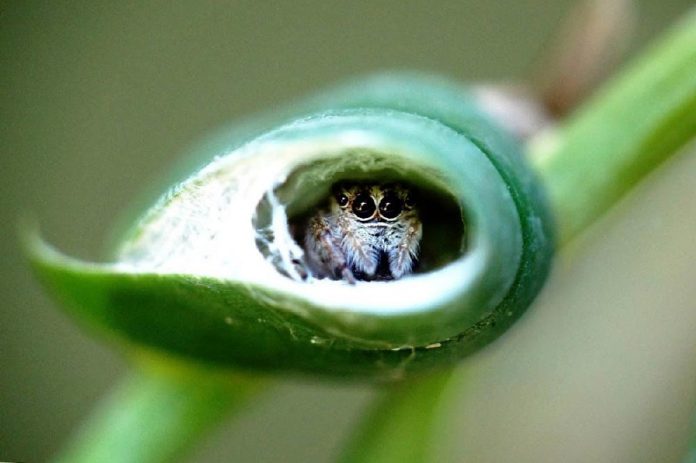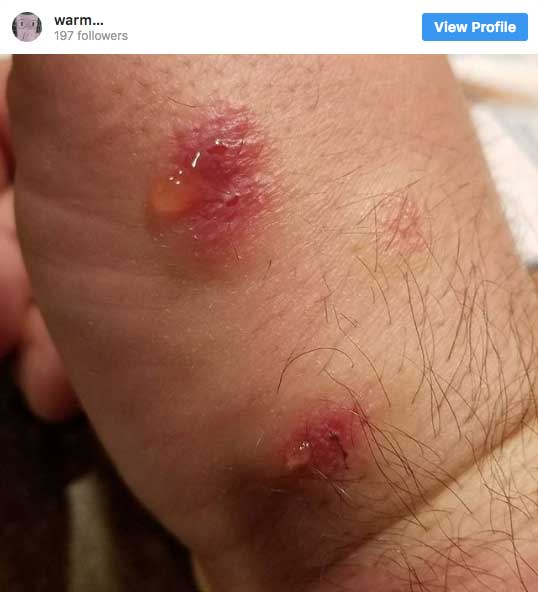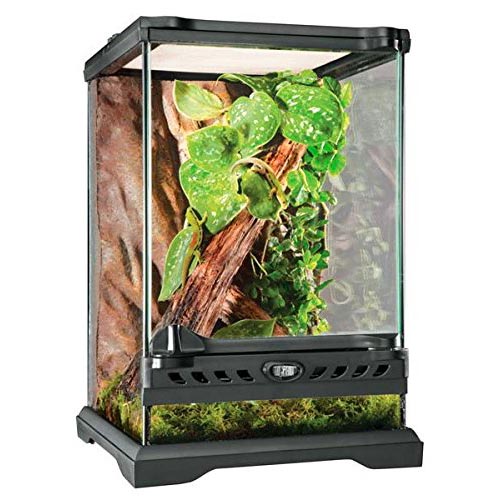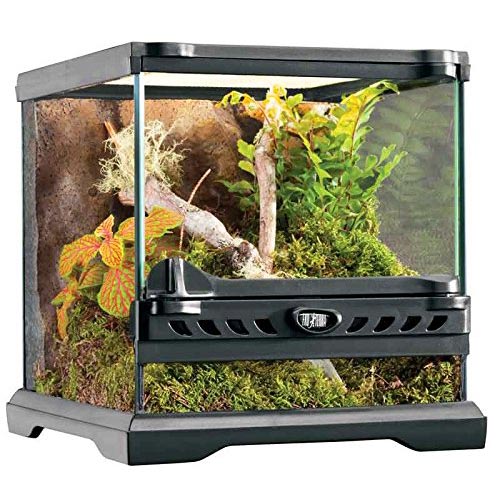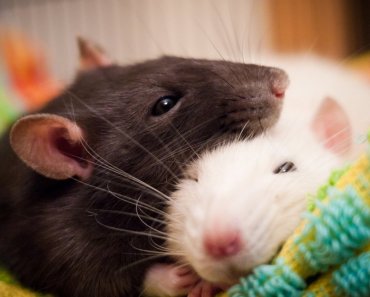Jumping spiders or salticidae are a type of spiders that are known for their jumping capabilities both to hunt or escape from danger.
They are capable carnivores that eat almost anything smaller than them, sometimes even the bigger ones too.
They have excellent sight and senses that gives them the edge to be the top predator of the food chain within their habitat.
So apart from being cute, they are great hunters that you can admire in awe. Hence today, more people are getting into keeping exotic pets like jumping spiders. One for their cuteness and two for their animosity.
But here is the deal
The lifespan of the jumping can be quite short. They only shed about 5 to 6 times from young to adulthood. Their total life span is about 1 to 3 years.
So before you consider them as a domestic pet, it is good to understand more facts about them and their requirements to keep a happy, healthy jumping spider.
After all, we want everyone to be responsible exotic pet owners.
Here is a jumping spider care guide that will help understand how to raise jumping spiders as a pet. And at the same time, GUARANTEED to help you make a better decision on whether they are suitable pets for you or not.
Are jumping spiders safe as pets?
Jumping spiders are very friendly, passive and harmless to us. In the wild, they are vicious predators that prowl at higher vantage points for their preys but in front of humans they tend to shy away quickly.
You can even handle them or play with them with your bare hands!
And what is even great about jumping spiders is that their main diet makes up of pest you and I hate!
But you are probably wondering… aren’t they poisonous?
There are a lot of misunderstandings when it comes to spiders. First impression that most people have is that they are poisonous.
Yes, that is correct…
Most spiders do carry venom but the fact is, only 30 out of 40,000 types of spiders have venom that is strong enough to threaten our lives.
As for jumping spiders, most genus of their kind carries venom but it is really too little to hurt us.
Their venom is meant to paralyze their prey before devouring them since they don’t usually spin webs to catch their prey but rather pounce on them from above.
I am not gonna lie to you…
Getting bitten by a jumping spider can be painful.

But it is really not something that lasts.
The bite will also heal in a matter of days. Unless you have an allergy to their venom, which, just like an allergy to peanuts, can be deadly.
Spiders that you have to watch out for are the brown recluse and black widow spiders. While looking for jumping spiders you may come across these 2 highly venomous spiders as well.
Their bites can be deadly and often require medical attention. Here’s an example of a black widow’s bite:
So how do you feel about jumping spiders as pets now? Do you think they are safe to handle?
How about we move onto the upkeep of jumping spiders before you make a decision.
Jumping spider housing setup
Jumping spiders don’t require a fanciful home to sleep in nor a huge tank to house them. Some jumping spider species can be quite small so for those, there is no need to get a large housing.
Jumping spider housing considerations:
- Container
- Substrate
- Shelters and hideouts
Container size
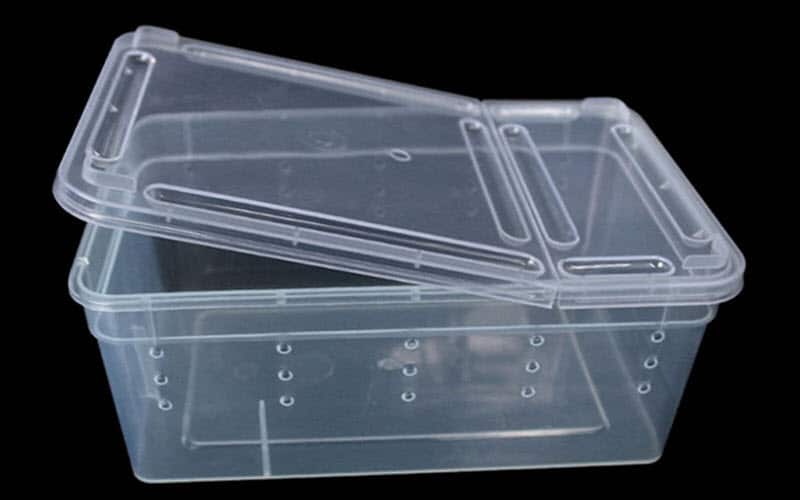

It really doesn’t matter what container you use as long as there are holes for air ventilation.
But space does matter, you want to give them ample space to move around like they do in their natural habitat.
You can prepare a container of at least 1 cubic foot in size for each spider. 1 cubic foot is at least a 28 liters or 7-gallon tank.
If you are not picky a simple medium or large Kritter Keeper from Amazon is good enough or alternatively, a smaller acrylic fish tank is also adequate.
One more thing that is important for your container is the lid or cover. You should always make sure there is a lid or cover over your container to prevent your spiders from running wild. It is good to use a mesh lid or ones with holes for air.
Other cheap containers suitable for spiders
- OSHIDE Acrylic Terrarium Container – This container has vents on 3 sides of the container. It is also fully transparent that provides 360° view of your spider.
- Biback Acrylic Sliding Container – This container is also transparent that provides a full view of your spider. It uses a sliding lid to create an opening for feeding. The downside to this container is that jumping spider usually creates webbing and stays at the top of the container. But there are ventilation holes at the top.
- OMEM Portable Transparent Plastic Box – This container is a simple setup with full transparency at all sides. This is the most suitable for your jumping spider as the lid can be opened from one side without ever disturbing your pet spider.
Apart from these affordable containers, for those who want to create a complete habitat for your spiders, you can go for larger more expensive terrariums below.
Top 2 Jumping spider terrarium that is an absolute overkill
#1 Exo Terra Glass Natural Terrarium
This setup is an absolute beast for jumping spiders. This is intended for bearded dragons but can also be a kingdom for jumping spiders. You can easily house more than 1 spider in this habitat.
#2 Exo Terra Nano Wide Terrarium
Here is another terrarium that is overkill for housing spiders. If you want to create a special home for them, this setup will give them ample space to hunt and breed.
Can we put more than 1 spider in the same tank?
No. Spiders should always be kept in isolation or they will eat each other.
They should get their own tank unless it is for breeding. Only for breeding, you can try putting a male and a female within the same tank.
But here’s the catch.
If you keep them too long together, there is a chance the female will cannibalize the male. So only put them together for a couple of days for mating. Then separate them back to their own tanks to ensure both survive.
Where to place your tank or container?
Spiders need sunlight. It is good to place your container somewhere near the window or areas with some natural light. They love the heat. But take note not to leave them in the sun for too long or they may get baked alive.
Substrate
A substrate is what is used at the bottom of the container. For jumping spiders, having a substrate is not compulsory as they spend more time at the top area of the container, probably at or close to the lid.
There are both pros and cons of using each substrate. Let’s take a look at what they are:
Fine soil or potting soil
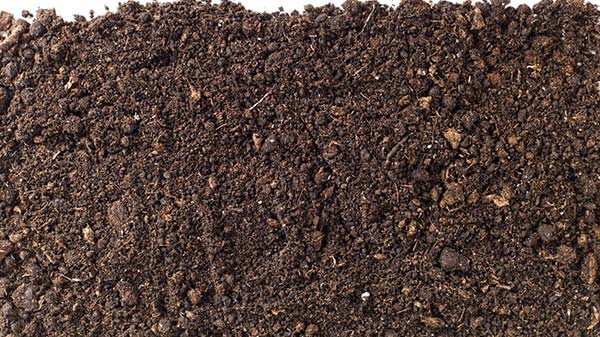

Pros:
- Soil can be used to mimic a natural habitat
- Great for visual
Cons:
- Can get messy with leftover food. Especially for mealworms, they have to be cleared or there is a chance they can pupate into beetles
If you need potting soil, you can get them here.
Paper towel
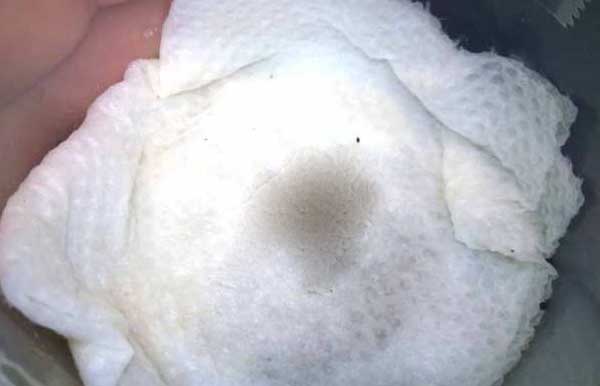
Paper towels are another affordable alternative that can be easily swapped out for a new piece when they are dirty. Getting paper towels in bulk will also provide lots of cost savings in the long run.
Pros:
- Simple and clean
- Spiders can dry themselves if they get wet for some reason
Cons:
- Doesn’t mimic the natural habitat
No substrate
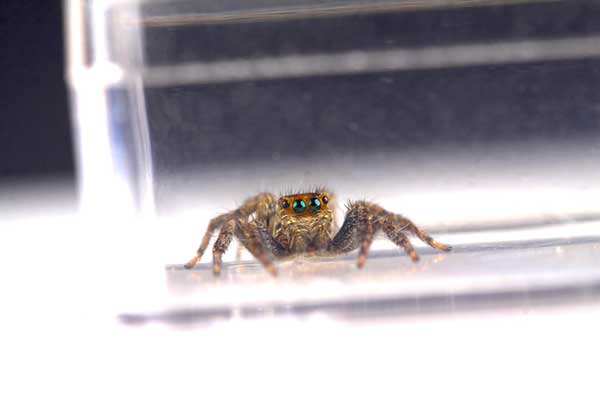

Pros
- Not much cleaning required
Cons:
- Doesn’t mimic the natural habitat
- The plastic surface might be slippery for the spider. Especially the older ones
Shelters, hideouts and accessories
Similar shelters and hideouts are not really compulsory but are good to have as it replicates their natural habitat.
Use tree barks, wood, logs, twigs, and branches as decorative items and hideouts for them.
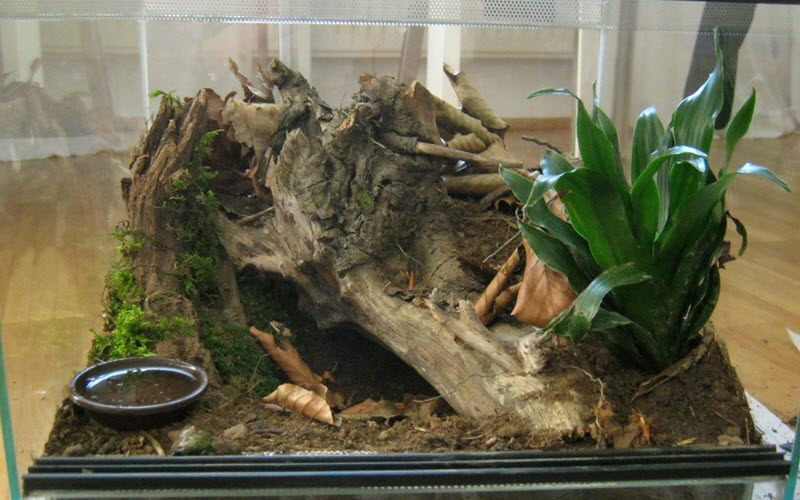

Depending on the species, some jumping spiders will rarely use them as they spend most of their time close to the lid in their webs.
But it is still good to have a natural wood surface like tree barks and branches for spiders to climb on and move about.
Throw in some live food for them to hunt on their own and be amazed at how they catch their prey. This will help bring them closer to their natural self and hone their hunting skills.
A great housing for jumping spiders will be to mimic their natural habitat. This way, they will always stay active and alert. It will also be a good environment for breeding if that crosses your mind.
Let’s take a look at some suitable accessories for your jumping spider tank.
For wood shelters and climbing spots, you can go for wooden branches and twigs:
For plants and covers, using natural plants will be great. But it can be a hassle to care for those plants as well. Alternatively, you can opt for lifelike terrarium plants for decorative purpose. Here are some examples:
Moving on we will be touching on what to feed them with…
What do jumping spiders eat?
Jumping spiders eats all kinds of pest.
From files to roaches to crickets and moths or any other insects are are smaller and vulnerable to their fangs would become their delicious dinner.
And do you know that jumping spiders in the wild even have nectar from flowers as their diet? Yes they can actually be vegetarians too!
What can you feed jumping spiders with?
Crickets
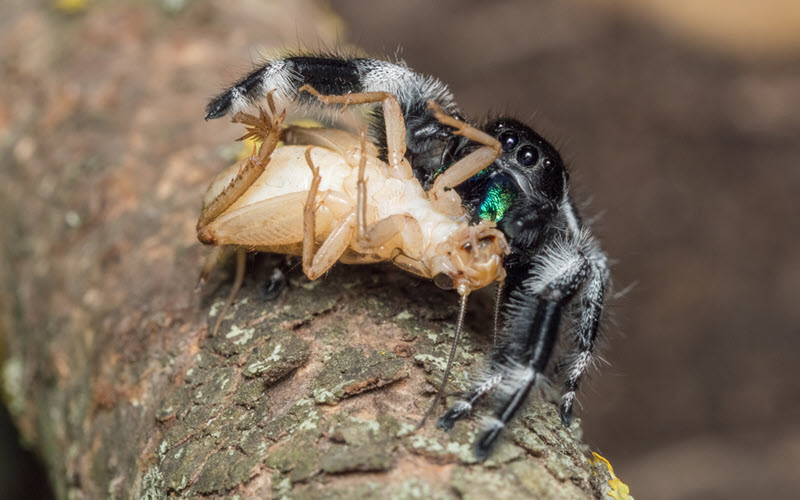

Crickets are the number 1 choice for jumping spiders. They can be found almost everywhere. Either catch them on your own or buy them online or at pet stores.
Pros:
- They are cheap and easily available
- Can be caught on your own
- Can be cultivated
Cons:
- Crickets that are too large can bite your spider
You can actually get live crickets of different sizes here.
Files
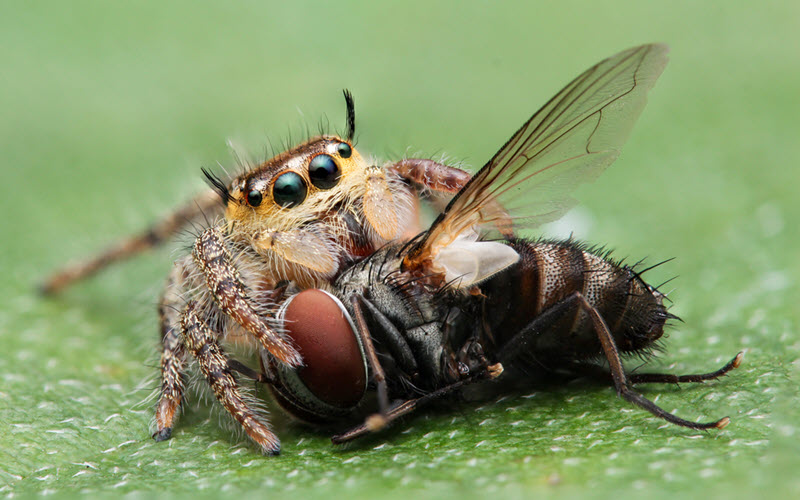

There are many types of files that are readily available even in your kitchen during any season. They might not be easy to catch but can definitely be bought at pet stores. So getting a ready supply of food for your spider is not difficult.
Pros:
- Can be found at home
- Spiders love them
- Can be purchased from pet stores
- Can be kept refrigerated for a steady supply of food source
Cons:
- May lay eggs and turn into more maggots if they are not refrigerated.
- Not easy to catch
If you are planning to cultivate your own fruit flies, get ready wingless fruit fly culture here.
Mealworms
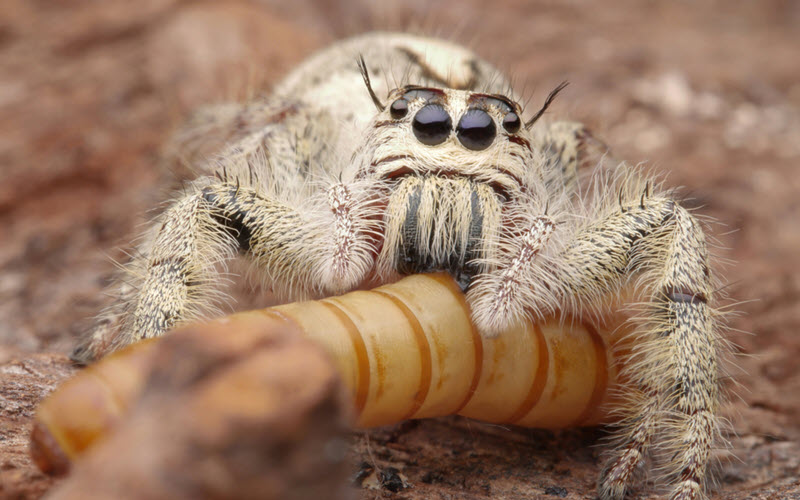

Mealworms are another great alternative delicacy for your spider. It can be easily bought from any pet stores or online.
Pros:
- Can be raised or cultivated on your own
- Easily available
Cons:
- Leftover mealworms have to be cleared or they turn into beetles
Live mealworms are easily available at many pet stores or you can get it shipped to your doorstep from these reliable mealworm sellers here.
As you can see, spiders are not high maintenance at all. These food sources can be caught or self-cultivated.
How to feed them?
Feeding them is really easy. You can drop live food into their container or offer them directly with tweezers or bare hands if you are not nervous around spiders.
Feeding frequency
For adults, feeding them every 2 to 3 days is adequate enough. When they are full, they will usually just ignore the food.
For spiderlings or juvenile spiders, they tend to get hungry often so between 1 to 2 days is fine. Juvenile spiders should really be kept separated or they may eat each other up.
For older spiders with age, they tend to eat less. Sometimes they can go without food for a month. They tend to prefer food that is already dead as they no longer hunt for food.
To find out more about what other insects or food they can have, check out our jumping spider diet guide here.
Drinking water
Spiders need to drink too. But not too much water or they will drown.
Fun fact:
Jumping spiders have lungs that look like pages of a book. They are also known as book lungs. This is also why they tend to drown very easily
To solve that, there are 2 ways, either –
Breeding the jumping spider
Breeding jumping spiders can be fun and interesting.
Sometimes when you put a male and female together, you find that the males will actually start waving their front legs to the female as a courtship dance.
And if the female accepts, she will lower her guard and go into passive position to allow the male to get close to her.
But here’s the catch
While attempting to mate with their female counterpart, there is a chance the male may get eaten by her. After all, the females are bigger than male spiders.
So it is important not to put both spiders together for too long.
Here is how to do it.
#1: Feed your spiders
- Make sure both spiders are well-fed
- This is to avoid cannibalism
#2: Pair them up
- Put both spiders into a spacious tank or container overnight or near the window with natural sunlight.
- You may notice the male spider starting to do their courtship dance to the female.
- Male usually store sperm into a sperm web. If the female allows him to advance, he will deposit the sperm into the underside of the female spider’s abdomen. This will fertilize the eggs.
#3: Separate them the next day or your male might get eaten alive
How do I know if they have successfully mated?
Spiders do not give birth but they lay eggs instead so they technically do not get pregnant but the symptoms are somewhat similar.
To know if you are successful, you will notice the female spider’s abdomen becoming larger like they are about to explode.
This is the main symptom that your female spider is gravid. Which in other words means “pregnant” with eggs.
Pregnant jumping spiders are also known to build a web silk cover and hole up inside to lay her eggs. She will then lay fertilized eggs into an egg sac made up of their silk thread.
Or they may just hang their egg sac on top of the container or tank where they usually are. This is how the spider mum protects her eggs.
At this point in time, you are probably wondering how many eggs can the spider lay?
Well, they can produce a lot of eggs. Starting from 2 eggs to even 1000 eggs at once.
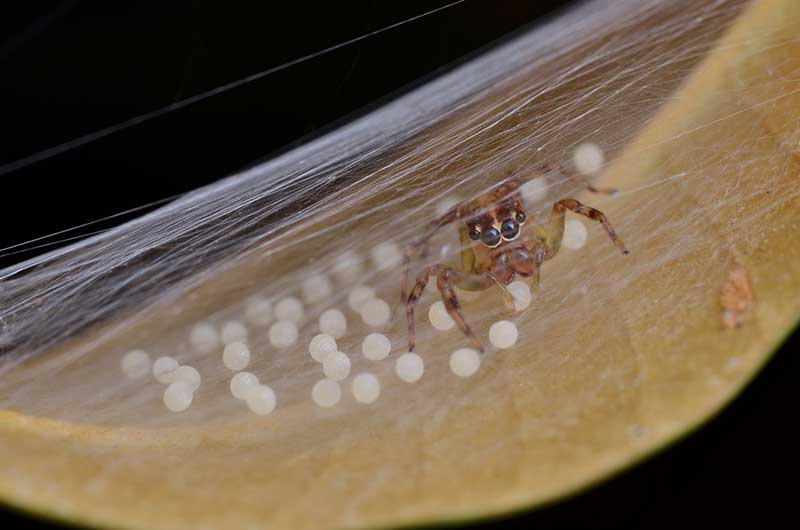

After laying their eggs, they should start coming out from their “lair” more often. Female jumping spiders at this point will get more aggressive and overprotective of her eggs.
Disturb her “lair” and you probably get bitten. Don’t say I didn’t warn you…
Sometimes, they do not leave their “lair” for many days. Possibly also not eating anything you serve as well. Or they do sometimes eat their own offsprings too.
What happens to the eggs after this?
It takes about 2 weeks to under warm temperature to hatch. They will also go through their first molting process before they disperse or come out of their egg sacs.
Make sure at this point in time to cover any holes in your container with a cloth to prevent them from escaping. They can really be very tiny.
Note that spiderlings can be cannibalistic, they will eat each other if you do not separate them. But it is still safe when they just hatch.
They will still get along at the start but once their body hardens they start to prey on one another. Then it will be the “survival of the fittest”. To prevent that, once they disperse, try to separate them as much as you can into other containers.
What to do with spiderlings?
You will need to feed them with water and live food. Do not mist their container or they will drown. Instead, you a cotton to soak up some water and place it in the tank.
To feed them, you can try aphids or small fruit files. These are a great food source that is easily available and can be bought online.
Now that you know how to breed them, how about we look at where to find or get them.
How and where to catch jumping spiders?
Jumping spiders can be found in many areas. They live in all sorts of habitats such as tropical forest or even deserts and mountainous areas. You should be able to see them often in areas with light vegetation or within your house.
But here’s the deal
Different habitats house different genus of jumping spiders. You need to know specifically what types of jumping spider you want before going out there to hunt for them.
Take for example –
If you want a peacock jumping spider, they can only be found in Australia. So if you are living in the United States, you probably only going to find Phidippus types or types like the Zebra jumping spider.
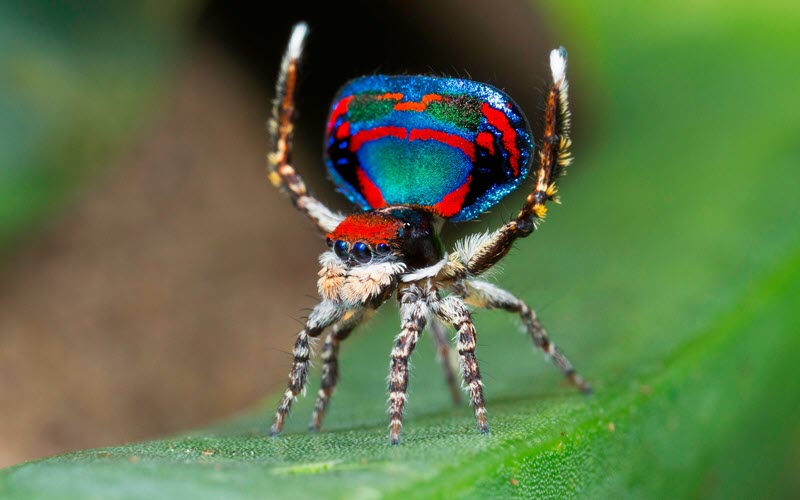
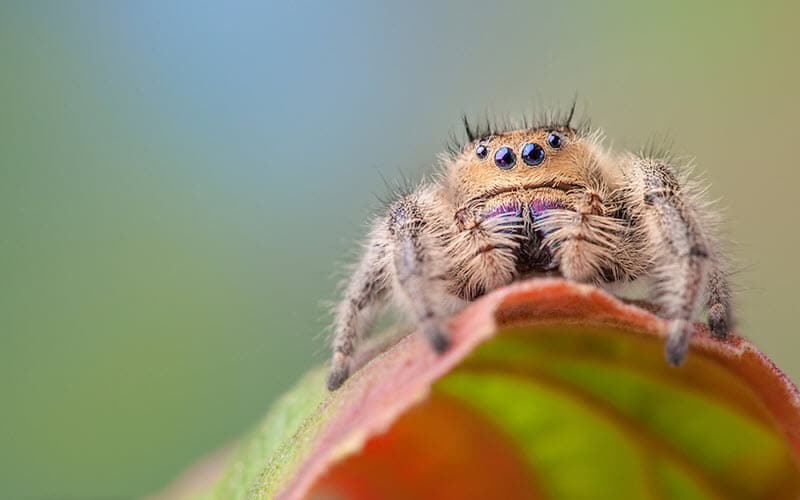
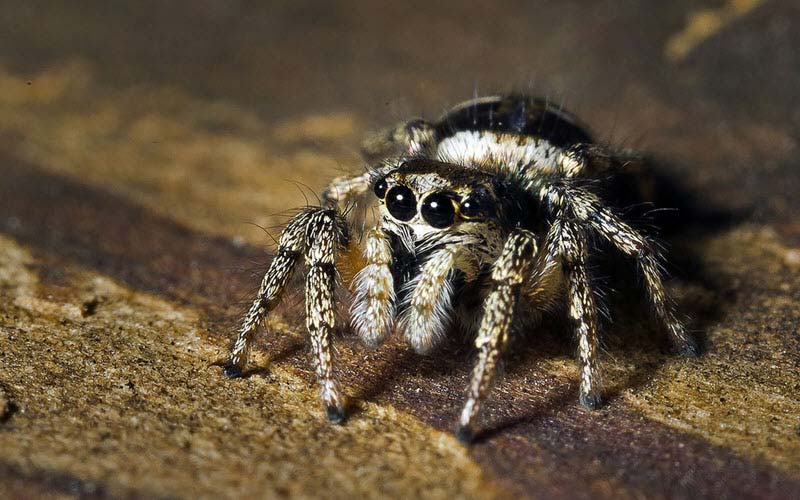
To find out more about the different jumping spider types and where to find them, you can take a look at our blog on the 8 amazing common jumping spiders here.
Potential areas where you can find them:
- Parks or garden if you have one in your yard
- In your home. Look for them on the walls. They like to climb on walls to have a birds-eye view of everything
- On flowers or top of tall grasses
Plan your catch
After identifying their location, it is time to catch them! But before you do that, it is imperative to make sure you have the appropriate protective gear to keep yourselves safe.
Here are some tips for a fun and safe time catching spiders
Tip #1: Make sure you know how jumping spider looks like
Spiders can be pretty small. Sometimes you may mistake other insects as your jumping spiders.
Or you may come across other dangerous species of spiders such as the brown recluse, black widow or hobo spiders. They tend to be in areas that are undisturbed so watch out for them.
Just to be really sure, here are some characteristics and pictures of jumping spiders.
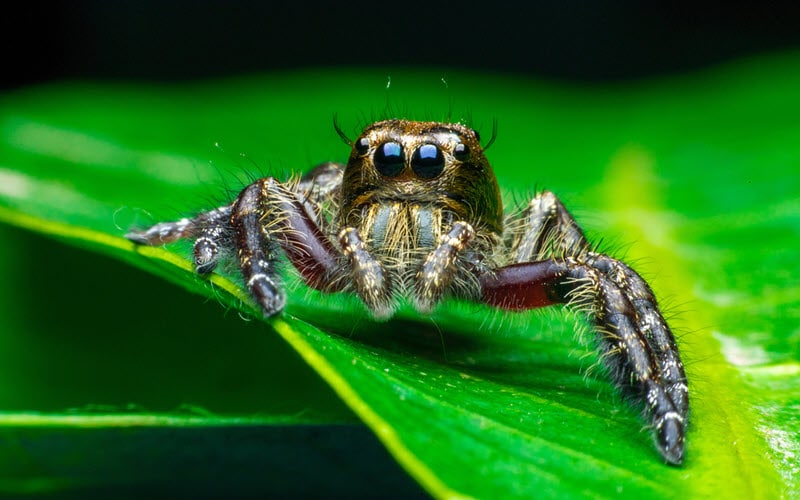

Characteristics of jumping spiders:
- All jumping spiders have great visions. Best way to identify them is to count the number of eyes they have. In total, they have 8 eyes. It pretty much surrounds their forehead. Their front 2 eyes are really large making them really cute.
- Another distinctive feature of a jumping spider is their long larger front legs. You might think they use their long front legs to jump but in fact, they rely on their rear legs more. Front legs are generally used for their mating dance or act as their support.
- Lastly, they have a lot of body hair to give them more grip for climbing.
Now that you know how jumping spiders look like, don’t go catching the wrong insects.
Getting bitten by some other insects or poisonous spiders can be life-threatening. Which brings us to tip #2.
Tip #2: Always wear protective gear


When catching spiders in the wild, you will definitely be in contact with other insects too. You might want to consider wearing protective gears such as gloves and long sleeve apparels to reduce the chances of stings and bites.
Not unless you explore deep into the dense rainforest, most bites may not be life-threatening but leave behind a painful experience.
Tip #3: Bringing the essentials
Traveling light is one thing but being ready is more critical. Being in the wild can be unpredictable so you definitely want to carry essentials that keep you ready.
Here are some items that will be helpful:
- Short stick to beat bushes or keep animals insects away
- Small container with holes to temporarily house the spider
- Torchlight
- Gloves for protection if you are handling them with your hands
- Magnifying glass to view your prized catch
Lastly, it never hurt to also bring along some sunscreen, shades, and water
How to catch spiders?
If you spotted a jumping spider on the wall, open your container and cup the spider. Then use a piece of paper or card to slide below. The spider will jump onto the container. Finally quickly close the container.
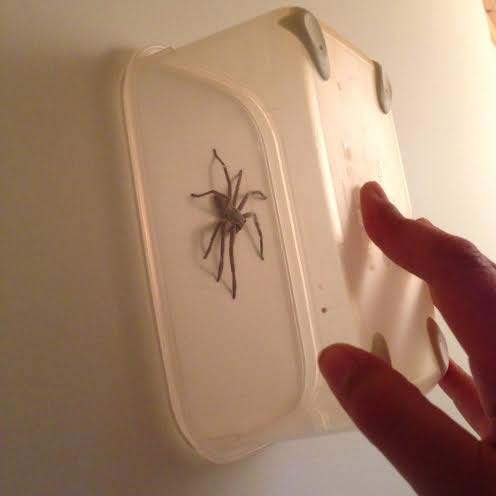
In the wild, use your stick to hit the bushes gently to for them to jump. Once you locate your spider. Either gently use your hands or your stick to guide it into your container. Wearing gloves will be helpful here.
To find out more on how to catch spiders, you can take a look at our guide on catching spiders here.
Do you remember how sometimes when you are not looking for something they appear all the time and when you want to find them they cannot be found?
Well, jumping spiders are like that. So if you are really fed up with finding them, you can always purchase them from online communities.
The price of jumping spiders can range between $10 to $30 or more depending on their rarity. If you don’t mind paying for one, there are many communities where you can get in touch with these sellers.
Cost of upkeeping a jumping spider
The cost of keeping jumping spiders as compared to other exotic pets is really one of the lowest. You can DIY everything in their housing. Even their food source can be cultivated or caught on your own.
But if you are really just gonna buy them. Here is some breakdown of their upkeep cost.
Cost of spider food
- Mealworms: $12 to $14 dollars online (can raise some on your own)
- Wingless fruit flies culture: $16 to $18
- Crickets: $29.99 (can raise on your own)
Depending on how many spiders you have, these foods can last for months. And you can take the remaining to culture on your own to raise even more food.
Cost of spider housing
- Kritter keeper tank: $25 for medium to large tank
- Aquarium tank: $20+ to $30+ for a 10 gallon tank
Housing is more of a one time cost. You can also use your own jar or container. They will be fine as long as there are holes.
Decorative items:
- Potting soil substrate: $6 to $7
- Driftwood for decorative purpose: $15 to $30
Many decorative items like tree bark, twigs leaves can all be taken from your backyard or garden.
Total cost to keep a jumping spider: can be less than $50
Spiders are really quite resilient. They can definitely take care of themselves. With exception to feeding since they are in a confined environment. On top of that, their upkeep cost is really cheap.
Before you make a final decision, it is rating time!
Conclusion: Jumping spider’s rating as pet
We will rate the jumping spiders base on the 3 most important considerations for any pet owner. They are:
Cost: 1/1
As you can see from the cost of upkeeping a spider. You can almost diy everything from house to even food. I can’t help but give jumping spider the highest rating for cost.
Maintenance: 1/1
Jumping spiders housing doesn’t require much maintenance except for misting your tank occasionally to provide your spiders some water. So it is definitely full marks for maintenance too.
Handling: 0.5/1
Spiders are not for everyone. Even though jumping spiders are relatively safe to handle, they can leave behind a nasty sting.
Just think of spiders as an acquired taste. Many get the jitters when they see spiders let alone handling them with ease. So it is definitely not for everyone.
In my opinion, jumping spiders has a total rating of 2.5 out of 3 making it a great pet for new owners.
What about you? Do you think jumping spiders are great pets after understanding how to take care of them?
Let us know in the comments below.

